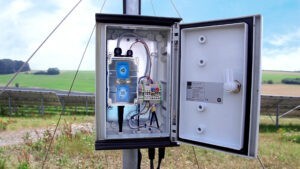 The rapidM2M M220 convinces with its ultra low power technology. In the latest tests, this has now been confirmed with impressive values. In PowerOn and standby mode, it has an average power consumption of only 22.97μA. During switch-on, the current consumption rose to 15 mA for approx. 2 seconds.
The rapidM2M M220 convinces with its ultra low power technology. In the latest tests, this has now been confirmed with impressive values. In PowerOn and standby mode, it has an average power consumption of only 22.97μA. During switch-on, the current consumption rose to 15 mA for approx. 2 seconds.
Different modes – low consumption
In the usual Microtronics manner, the rapidM2M M220 also offers different operating modes. This gives you an additional option for optimally adapting the consumption values to your application.
| Operating mode | VAUX = 3.82V | VIN = 5V | VIN = 12V | VIN = 24V | VIN = 32V |
| Interval | 22.26μA | 22.97μA | 17.24μA | 22.07μA | 27.21μA |
| Wakeup | 3.11mA | 2.85mA | 1.18mA | 0.66mA | 0.54mA |
| Online | 27.51mA | 25.8mA | 10.44mA | 5.71mA | 4.42mA |
Successful power reset endurance test
In addition, the rapidM2M M220 was subjected to an endurance test. A total of 10,500 power resets were carried out. Not a single memory error occurred. The script runs flawlessly the entire time (and continues to do so). Neither conspicuous log entries nor exceptions were produced in the firmware. The measurement data sets are available without gaps.
For a detailed evaluation of the various power consumption measurements, please refer to the rapidM2M Modul M220 Datasheet!


